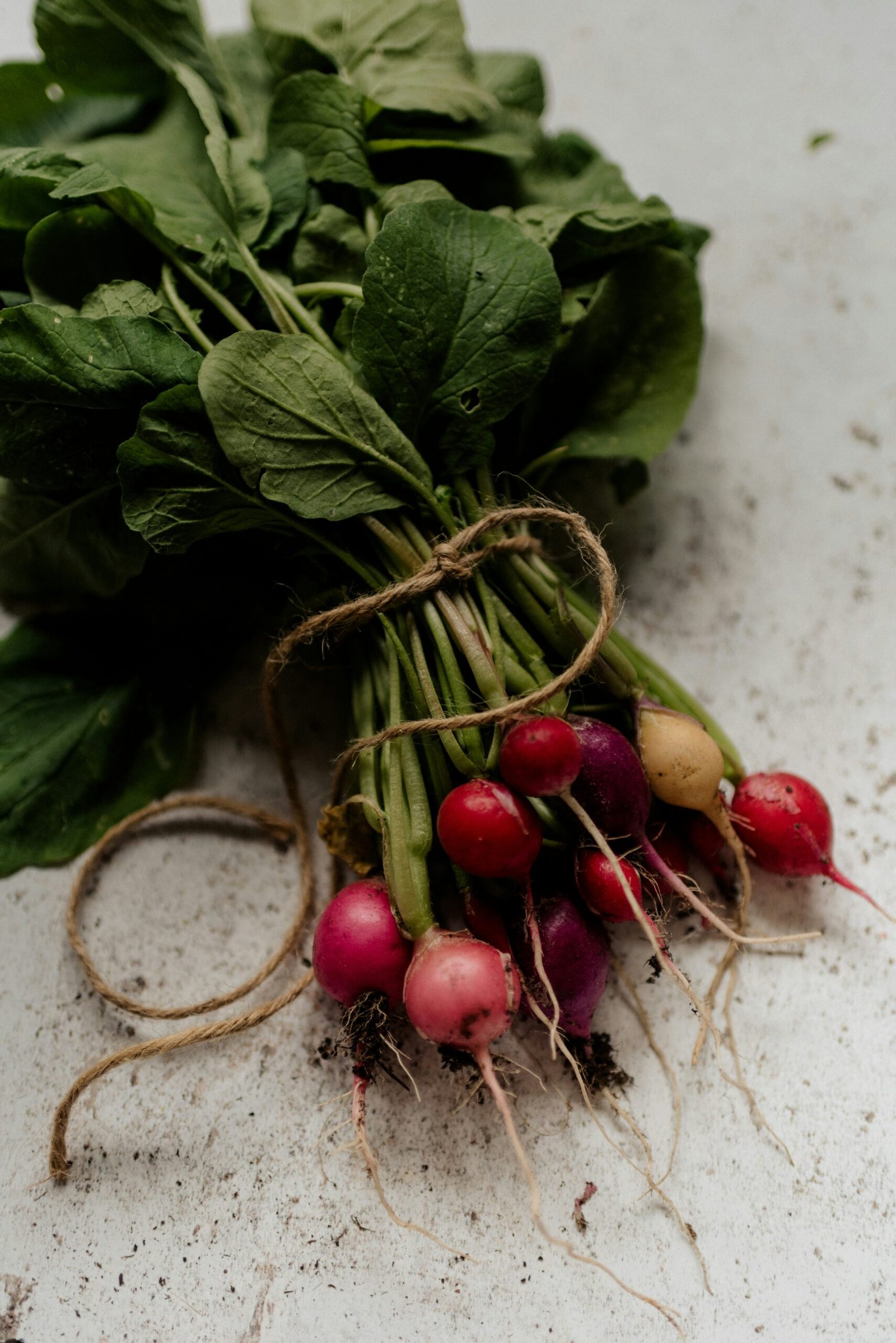Introduction to Kitchen Gardening
Kitchen gardening is an enriching and practical pursuit that enables individuals to cultivate their own herbs, offering an array of benefits. By growing your own herbs, you gain access to fresh, organic ingredients that can elevate your culinary creations and also serve various medicinal purposes. The practice of kitchen gardening fosters a deeper connection with nature and food, enhancing the overall quality of life.
One of the foremost advantages of kitchen gardening is the consistent supply of fresh herbs. Unlike store-bought options, home-grown herbs retain their nutritional value and flavor, providing superior quality. Additionally, cultivating your own herbs ensures that they are free from pesticides and harmful chemicals, promoting a healthier lifestyle.
Engaging in kitchen gardening is also an economically sensible decision. The initial investment in seeds or small plants is minimal compared to the ongoing expense of purchasing herbs from the market. Furthermore, many herbs are perennial, meaning they regrow each year with proper care, thus reducing the need for yearly replanting and lowering costs even further.
The ease of growing herbs at home cannot be overstated. Many herbs require minimal space and can thrive in containers, making them suitable for both outdoor gardens and indoor settings such as windowsills or balconies. With basic care, including adequate sunlight, water, and well-drained soil, a variety of herbs can flourish effortlessly.
Kitchen gardening is not only a practical activity but also a rewarding hobby that fosters a sense of accomplishment. Watching your herbs grow from seedlings to mature plants can be incredibly satisfying. Moreover, it provides an opportunity to experiment with different herb varieties, expanding your culinary repertoire and enhancing your meals with unique flavors.
In essence, kitchen gardening is a fulfilling endeavor that combines the joys of gardening with the practical benefits of having fresh, organic herbs at your fingertips. It is an accessible, cost-effective, and enjoyable way to enrich your lifestyle, one herb at a time.
Top Reasons to Grow Your Own Herbs
Growing your own herbs offers a myriad of advantages that go beyond just having fresh ingredients at your fingertips. One of the foremost benefits is the unparalleled flavor enhancement in cooking. Fresh herbs, such as basil, thyme, and rosemary, can elevate everyday dishes, adding complexity and depth that dried herbs simply cannot match. Imagine a homemade pizza topped with fresh basil or a roasted chicken infused with rosemary from your garden—it’s a culinary experience that transforms ordinary meals into extraordinary ones.
Health benefits also play a significant role in the appeal of a personal herb garden. Many herbs are packed with essential nutrients and antioxidants that contribute to a healthier lifestyle. For instance, parsley is rich in vitamins A and C, while mint can aid in digestion. Incorporating fresh herbs into your diet can enhance your overall well-being, offering a natural way to boost your immune system and reduce inflammation.
From an environmental perspective, growing your own herbs can have a positive impact. By cultivating your garden, you reduce the need for store-bought herbs, which often come packaged in plastic and require transportation, contributing to a larger carbon footprint. An herb garden supports sustainability, promoting eco-friendly practices such as composting and the use of organic soil.
Cost savings are another compelling reason to grow herbs. Purchasing fresh herbs from the supermarket can be expensive, particularly if you use them frequently. A packet of seeds or a small herb plant is a minimal investment that yields a continuous supply, making it a cost-effective alternative in the long run.
Lastly, the joy of gardening should not be underestimated. Tending to an herb garden provides a sense of accomplishment and can be a therapeutic hobby. The act of nurturing plants from seed to harvest is incredibly rewarding, offering a peaceful respite from the hustle and bustle of daily life. Whether you have a spacious backyard or a small balcony, growing your own herbs is a fulfilling endeavor that enriches your culinary and personal life.
Choosing the Right Location for Your Herb Garden
Establishing an herb garden begins with selecting an ideal location, a crucial step that can significantly influence the health and productivity of your plants. One of the primary factors to consider is sunlight. Most herbs thrive in full sun, requiring at least six to eight hours of direct sunlight daily. Therefore, choosing a spot that receives ample sunlight is essential for robust growth. If outdoor space is limited, a sunny windowsill can serve as an excellent alternative for an indoor herb garden.
Soil quality is another vital element. Herbs generally prefer well-draining soil with a neutral to slightly alkaline pH. Enrich the soil with organic matter, such as compost, to ensure it is rich in nutrients and conducive to healthy root development. For those with poor soil conditions, raised beds or containers can be a practical solution. These options allow for better control over the soil environment, ensuring optimal growth conditions for your herbs.
Space requirements must also be taken into account. While some herbs can spread quite extensively, others remain relatively compact. Understanding the growth habits of your chosen herbs will help you allocate sufficient space in your garden. If space is at a premium, consider vertical gardening techniques, such as using trellises or stacked pots, to maximize the available area.
Additionally, the choice between planting in pots, raised beds, or directly in the ground depends on your specific circumstances and preferences. Pots are versatile and portable, making them suitable for both outdoor and indoor herb gardens. Raised beds offer improved soil drainage and can be easier to manage for those with limited mobility. Planting directly in the ground is ideal for those with ample garden space and suitable soil conditions.
For urban dwellers or those with constrained outdoor areas, indoor herb gardens present a viable option. By utilizing windowsills, countertops, or dedicated indoor planters, you can cultivate a variety of herbs year-round, ensuring a fresh supply for your culinary endeavors.
Basil
Basil is a popular herb known for its aromatic leaves, often used in Italian and Mediterranean cuisines. It thrives in warm, sunny environments with well-drained soil. Regular watering is essential, but be cautious of overwatering as it can lead to root rot. Pinch off the flower buds to encourage more leaf growth. Basil is commonly used in pesto, salads, and as a garnish for pasta dishes.
Mint
Mint is an easy-to-grow herb that spreads quickly, making it ideal for container gardening to control its growth. It prefers partial shade and moist, well-drained soil. Mint is versatile in culinary uses, including teas, desserts, and as a refreshing addition to beverages like mojitos. Regular trimming helps maintain its shape and prevents it from becoming invasive.
Parsley
Parsley is a biennial herb that flourishes in full sun to partial shade and well-drained soil. It requires consistent watering, especially during dry spells. This herb is rich in vitamins and is commonly used as a garnish or in dishes like tabbouleh, soups, and stews. Regular harvesting encourages new growth and keeps the plant healthy.
Thyme
Thyme is a hardy perennial herb that thrives in full sun and well-drained soil. It requires minimal watering once established. Thyme is often used in seasoning blends, marinades, and roasted vegetables. Its small, aromatic leaves add a robust flavor to various dishes. Pruning regularly helps maintain its shape and promotes new growth.
Rosemary
Rosemary is a woody perennial herb that prefers full sun and well-drained soil. It is drought-tolerant once established, making it low-maintenance. Rosemary’s needle-like leaves are used in roasting meats, potatoes, and bread. Regular pruning helps keep the plant bushy and encourages new growth. It also serves as a fragrant ornamental plant.
Cilantro
Cilantro, also known as coriander, grows best in cool weather and well-drained soil. It requires regular watering to thrive. Cilantro is widely used in Mexican and Asian cuisines, adding a fresh, citrusy flavor to salsas, curries, and salads. Harvesting leaves regularly prevents the plant from bolting and ensures a continuous supply.
Oregano
Oregano is a perennial herb that loves full sun and well-drained soil. It is drought-tolerant once established and requires minimal care. Oregano is a staple in Italian and Greek cuisines, often used in pizza, pasta sauces, and grilled meats. Regular pruning encourages bushier growth and enhances the plant’s flavor.
Chives
Chives are a perennial herb that thrives in full sun and well-drained soil. They require moderate watering and benefit from regular harvesting. Chives have a mild onion flavor and are commonly used as a garnish for soups, salads, and baked potatoes. Their purple flowers are also edible and add a decorative touch to dishes.
How to Plant and Care for Your Herbs
Establishing a thriving kitchen garden begins with the thoughtful selection and care of your herbs. Seed selection is paramount; opt for high-quality, non-GMO seeds from reputable sources. Alternatively, starter plants can offer a head-start, particularly for novice gardeners. Once you have your seeds or seedlings, the next step is soil preparation. Herbs generally prefer well-draining soil with a pH level between 6.0 and 7.0. Amending your garden soil with organic compost can enhance its fertility and structure, providing a rich growing medium for your herbs.
When it comes to planting, follow the specific depth and spacing recommendations for each herb. Most herbs thrive in full sunlight, requiring at least six hours of direct light daily. Watering is another critical aspect of herb care. While young, herbs need consistent moisture to establish roots. However, mature plants generally prefer the soil to dry slightly between watering sessions. Overwatering can lead to root rot and other complications, so it’s crucial to monitor soil moisture levels diligently.
Fertilizing your herbs can boost growth and flavor, but moderation is key. Use a balanced, slow-release fertilizer or organic options like compost tea. Over-fertilization can lead to lush foliage but may dilute the essential oils that give herbs their distinct aromas and flavors.
Pest control is a common concern in herb gardening. Natural methods, such as introducing beneficial insects like ladybugs or using neem oil, can effectively manage pest populations. Regularly inspect your plants for signs of distress, such as yellowing leaves or stunted growth, which may indicate issues like overwatering, nutrient deficiencies, or pest infestations. Addressing these problems promptly ensures your herbs remain healthy and productive.
By following these guidelines for planting and caring for your herbs, you can cultivate a vibrant kitchen garden that enriches your culinary experiences and enhances your overall well-being.
Harvesting and Storing Your Herbs
Harvesting herbs at the right time is crucial for maintaining their flavor and encouraging continuous growth. For most herbs, the best time to harvest is in the morning after the dew has evaporated but before the sun becomes too intense. This is when the essential oils in the leaves are at their highest concentration, ensuring maximum flavor.
Each herb has its own specific harvesting method. For example, basil should be harvested by pinching off the leaves just above a pair of leaves, which encourages the plant to become bushier. Mint and oregano can be harvested by cutting the stems about one-third down the plant, while cilantro is best harvested by snipping the outer leaves first. Regular harvesting of herbs like chives and parsley promotes new growth and keeps the plants productive.
Once harvested, proper storage of fresh herbs is essential to maintain their quality. For short-term storage, herbs like basil and cilantro can be placed in a jar of water, similar to cut flowers, and kept on the kitchen counter. Alternatively, herbs like rosemary and thyme can be wrapped in a damp paper towel and stored in a plastic bag in the refrigerator.
For long-term preservation, drying herbs is a popular method. To dry herbs, gather them into small bundles and hang them upside down in a well-ventilated, dark area. Once fully dried, the leaves can be crumbled and stored in airtight containers away from light and heat. Freezing is another effective technique, especially for herbs like parsley, cilantro, and chives. To freeze, chop the herbs and place them in ice cube trays with a bit of water or olive oil, then transfer the frozen cubes to a freezer bag.
Following these best practices for harvesting and storing herbs ensures that you can enjoy their fresh flavors throughout the year, enhancing your culinary creations with ease.
Creative Ways to Use Fresh Herbs in Your Cooking
Fresh herbs are a fantastic way to elevate everyday meals, infusing them with vibrant flavors and enticing aromas. From salads to soups, and marinades to beverages, herbs can transform simple dishes into culinary delights. Let’s explore some creative ways to incorporate fresh herbs into your cooking.
Salads are an excellent starting point. Fresh herbs like basil, parsley, cilantro, and mint can be torn and tossed into green salads, adding a burst of freshness. Try a basil and strawberry salad with balsamic vinaigrette, or a cucumber and mint salad with a light yogurt dressing. Herbs also pair beautifully with grains; consider a parsley and bulgur tabbouleh or a cilantro-lime quinoa salad.
Soups benefit immensely from fresh herbs. A classic chicken noodle soup can be elevated with the addition of fresh thyme and parsley. For a more adventurous option, try a cilantro and lime-infused tortilla soup. Herbs like dill work wonders in creamy seafood chowders, while rosemary and sage add depth to hearty bean soups.
Sauces and marinades are another domain where herbs shine. A chimichurri sauce made with fresh parsley and oregano is perfect for grilled meats. Basil pesto, with its blend of fresh basil, garlic, pine nuts, and Parmesan cheese, can be used as a sauce for pasta or a spread for sandwiches. Fresh thyme and rosemary make a delightful marinade for roasted chicken.
Beverages can also be enhanced with herbs. Mint is a classic addition to iced tea and lemonade, while basil can add a surprising twist to cocktails like a basil gin smash. Fresh rosemary can infuse simple syrups, which can then be used in a variety of drinks.
For those who enjoy making homemade condiments, herb-infused oils, butters, and vinegars are a must-try. Basil-infused olive oil can be drizzled over tomatoes and mozzarella, while rosemary-infused vinegar adds zest to salad dressings. Herb butters, such as chive butter or garlic-parsley butter, can be spread on bread or melted over vegetables and meats.
Incorporating fresh herbs into your cooking not only enhances flavor but also brings a touch of garden freshness to your meals. Experiment with different combinations to discover your favorite herb-infused creations.
Conclusion and Encouragement to Start Your Herb Garden
In this blog post, we have highlighted the myriad benefits of cultivating a kitchen garden filled with essential herbs. From enhancing culinary dishes to providing medicinal properties, herbs like basil, rosemary, mint, and thyme offer a wealth of advantages that can transform your cooking and health. Growing your own herbs is not only a cost-effective solution but also ensures that you have access to fresh, organic ingredients right at your fingertips.
Whether you’re an experienced gardener or a complete novice, starting a herb garden is a rewarding endeavor that can be tailored to fit any space or lifestyle. Many herbs are surprisingly easy to grow and maintain, making them perfect for beginners. By following the tips and guidelines provided in each section, you can successfully cultivate a thriving herb garden that meets your personal needs.
For those looking to delve deeper into the world of herb gardening, there are numerous resources available. Books such as “Rodale’s Basic Organic Gardening” and “The Herb Gardener’s Essential Guide” offer comprehensive insights into growing and utilizing herbs. Additionally, online gardening communities and forums can provide valuable support and advice from fellow herb enthusiasts.
Embark on your gardening journey with confidence, knowing that the effort you invest will yield rewarding results. The simplicity and versatility of growing herbs make it an accessible and enjoyable hobby for individuals of all ages and skill levels. So, gather your gardening tools, select your favorite herbs, and take the first step towards creating a flourishing kitchen garden. The benefits you will reap in both flavor and health are well worth the endeavor.





















+ There are no comments
Add yours